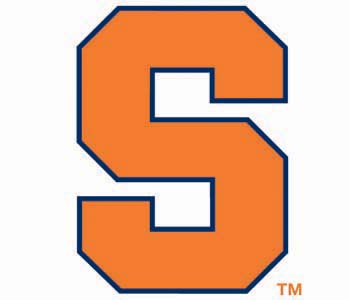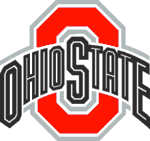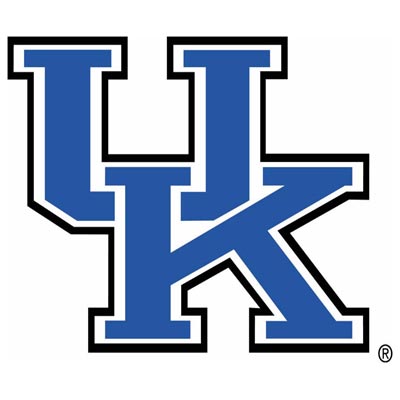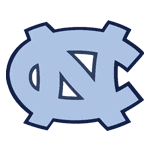

Team
|
NBA-DRAFT.COM top 65 College Teams (#5 - 1)
|
And now for the final countdown. Only five teams remain in our poll- all five with legitimate title hopes with a mix of returning talent and talented incoming freshmen. Within these five programs, there is star power (eight all-league players in 2010-11), youthful talent with potential (seven all-rookie selections, including three Rookie of the Year players) and defensive stoppers (two Defensive Player of the Year award winners). Not too mention, the coaches and leaders of these teams aren't too shabby (3,100+ wins combined). So which program will succeed? Here's our top five:
|
|
 |
#5 Syracuse
Of the five, Syracuse may have lost the most when center Rick Jackson graduated. Granted he is the only loss, that just shows how big of an impact player Jackson was for the Orange; he was second on the team in scoring (13.1 points) and topped the conference in rebounding (10.3) and blocks (2.5 per game). He was a steady option, playing nearly 90 percent of Syracuse's minutes and providing invaluable low-post scoring, something this team now lacks without him, but also his passing and ability to command and defend the paint in Boeheim's infamous 2-3 zone.
Attempting to replace some of the production lost will be 7-foot sophomore Fab Melo, a real talent, but Syracuse's second "Melo" only disappointed; he was a heralded freshman, but due to injuries, a lack of conditioning, foul troubles and an overall lack of effectiveness, Melo must trim down his frame to give the Orange the boost they need on the inside. The second-best option, in terms of returning talent is 6'10", athletic Baye Moussa Keita. He is not anything close to the offensive talent or force that Jackson was, but defensively, Keita is comparable defending the paint with the utmost efficiency. Boeheim will also look the way of the nation's second or third best center- a super-athletic 6'9" Rakeem Christmas; offensively challenged, Christmas has an excellent touch around the rim, but lacks the girth and developed post moves to acquire scoring position, but can certainly impact the game defensively.
The depth and talent in the backcourt is amongst the nation's best and it starts at point guard in honorable mention All-Big East selection Scoop Jardine. In the top conference in all of college basketball, Jardine is the best returning floor general with 5.9 assists per game to go along with his 12.5 points and 1.6 steals. He's an aggressive, risk-taker on both ends of the court, and if Boeheim can get him to cut down on some of his turnovers, the Orange can get out and run and score the basketball in transition with this athletic lineup. Playing alongside Jardine is Bradon Triche, a stronger, taller combo-guard who can handle the point guard duties as well. Triche and Jardine both need to do a better job creating for others in scoring opportunities, including getting some of the shooters on this roster better looks from behind the arc. Syracuse shot and forced a ton of jumpers from the perimeter, instead of penetrating the defense. They had one of the lowest free-throw rates and conversions in the country last season.
The best player and best NBA talent on this Syracuse team is wing Kris Joseph. Athletic, and blessed with size and quickness, Joseph fell into the curse of trying to do too much last season, including trying to prove he can knock down perimeter shots. Joseph is a gifted scorer off the dribble, slashing through the lane and finishing with contact, yet Joseph took 123 3-point attempts last season. Granted, he converted on 36 percent of them (which was second-best on the team), Joseph stood around on the perimeter too often and will need to put the ball on the floor and get to the rim more often this season. Leave the perimeter shooting to the likes of Dion Waiters and freshmen Michael Carter-Williams and Trevor Cooney.
|
 |
#4. UConn
UConn was going to be a Top 25 team no matter what. Jeremy Lamb showed poised and promise last season and had an offseason with Team USA to build on. Alex Oriakhi is back in the frontcourt to rebound, protect the rim on defense and convert shots around the rim. Shabazz Napier and Roscoe Smith had nice freshmen seasons and looked more comfortable in the pressure of the post-season, but still, the Huskies were losing Kemba Walker. There was no replacing him; he played almost all of their minutes (9th most in the NCAA) and took most of their shots (32.9 percent while he was on the floor, 26th in the country), including all of the big ones with the games on the line. He was their primary scorer, primary ball-handler and was able to create when things broke down. With Walker gone to the NBA, this team was good, but not great. Walker isn't back, but the Huskies received a huge boost when center Andre Drummond, the No. 2 player in the freshman class, decided to enroll at UConn instead of attending prep school. Now, UConn is one of the elite class of four teams that are considered legitimate title contenders.
Drummond has monstrous NBA size at 6'10, 275 pounds and is going to be a load to handle for opponents. He can play around the rim, finishing with power on catches and dunks or finesse on his baby hook shots, or he is skilled enough to step away from the rim, knock down shots or even put the ball on the floor for a dribble or two and get to the rim. Alongside the offensively-developing and hustle-oriented Alex Oriakhi, Drummond is the ultimate "complement" or shall we say, Oriakhi is the complement to much more talented Drummond. Just like he did a year ago, Oriakhi will be one of the best offensive rebounders in the country and a defensive force to be reckoned with.
On the wing, Roscoe Smith will return to the rotation, but perhaps not the starting the lineup due to the addition of freshman DeAndre Daniels who was snagged with a late commitment in the signing period. Smith is a supremely long, lean forward who can really play either spot due to his length and ability to crash the glass. He will need to improve his mid-range and deep-perimeter shooting if he wants to fend off Daniels, another long, lean wing with better scoring instincts.
Shabazz Napier will no longer have the comfort of Kemba Walker drawing the pressure of the defense, but he is a talented ball-handler with an excellent array of moves to create separate between him and the defenders as he lacks the top-level quickness and athleticism. When he isn't dumping the ball into Drummond or Oriakhi, Napier will be running the Huskies' offense, hitting a spotting up Jeremy Lamb on the wing or cutting through the lane. Lamb was a stud in the postseason and is poised for a huge season as the top option in a talented offensive group of guys.
|
 |
#3. Ohio State
In 2010-11, no team was more complete than the Ohio State Buckeyes. Powerful down low and dominating on the perimeter, Thad Matta's team reeled off 24 straight victories, finishing atop the Big Ten in both the regular-season and conference tournament, collected all sorts of post-season awards, but fell just short in the Sweet 16 to Kentucky.
The Buckeyes lose 3-point specialist Jon Diebler (highest offensive rating in the country according to Kenpom.com, connecting on better than half of his 3-point attempts), but also veteran leader, versatile wing, David Lighty and interior defender and one of the toughest bigs in the country in Dallas Lauderdale. In Matta's seven man rotation, OSU lost two starters and a huge chunk of production, but with the returning talent such as Jared Sullinger, William Buford, Aaron Craft and Deshaun Thomas and an incoming freshman recruiting class featuring two high school All-Americans and two more forwards to add depth. As the Buckeyes lose talent, so does the rest of the Big Ten Conference which brings back just four all-league players total, while Ohio State has two by themselves, not including the Big Ten Defensive Player of the Year.
It all starts on the inside with big man Jared Sullinger. Last season, Sullinger really was a true big man at 6'9", 280 pounds, a first-team consensus All-American. He was dominating at times, bullying his way around the rim (17.2 points, 54.1 percent from the field), drawing 6.8 fouls per 40 minutes of action and amassing rebounding rates that are amongst the nation's best. What's scary is that Sullinger spent the entire offseason chiseling down his wide frame to get quicker and more agile. He will be backed up by 6'10" highly recruited center Amir Williams, a still-developing athletic threat.
On the perimeter, Ohio State guards take advantage of constant double-teams and teams focusing on Sullinger in the post. The backcourt is led by William Buford, a combo-guard with his ball-handling and court vision, but more so of a natural scorer. Buford is the top returning shooter from the perimeter at 44.2 percent from behind the arc in the conference. Sophomore Jordan Sibert will take on a larger role backing up Buford, but there isn't much room in the rotation for the 6'4" guard.
At the point Aaron Craft was effective and efficient running the team, but defensively, he was one of the best harassing and dictating opposing guards in the entire country. He moves his feet well to stay in front of his man and uses his body well to control direction- a perfect fit in the physical Big Ten. He will be counted on this season to knock down open shots from the perimeter as both Diebler and Lighty are no longer options (165 3s made between the two; Craft knocked down 37.2 percent from a year ago. A mature freshman guard, Shannon Scott, has excellent point guard instincts, skills and decision-making will be the first guard off the bench.
On the wing, the loss of LaQuinton Ross (ruled ineligible) hurts the depth, but last season's 6th man, Deshaun Thomas, has serious potential. At 6'6", he can play both inside and out, though he is more comfortable spotting up on the wing and slashing off the wing. He is the ideal candidate to pick-up the scoring and defensive impact left behind by the recent graduates.
|
 |
#2. Kentucky
For the third year in a row, Kentucky and coach John Calipari racked in the nation's top recruiting class after being decimated by a departure of players to the NBA. Count them- that's eight players to the League in the last two seasons alone, including six first-round picks. This offseason was a bit different as potential lottery pick Terrence Jones stayed in school as did reserve guard Doron Lamb and potential second-rounder Darius Miller. Now, those three will be counted on for veteran leadership for a recruiting class that counted four players in the nation's top twenty.
Terrence Jones is a uniquely talented forward due to his 6'8", 240 pound size, but his athleticism and quickness as well. He is at his best mixing it up, posting up smaller defenders and taking true 4s off the dribble or spotting up on the wing. He is the second highest returning scorer at 15.7 points behind 26 made 3s and 243 free-throw attempts (most in the SEC), but he was also the top rebounder in the conference last season with 8.8 boards a game. Jones has the ability to elevate his game to another level with more focus and determination on the offensive end- there were too many times where he stood around on the perimeter.
Playing alongside Jones in the frontcourt are two one-and-done candidates- power forward Anthony Davis and small forward Michael Gilchrist. Let's start with Davis- he's 6'10", 200 pounds and up until about a year or two ago, Davis was a relative unknown playing guard. Thanks to a growth spurt that shot him up more than a half a foot, now he's in the mix for the No. 1 overall pick. He's a versatile offensive talent, but supremely raw due to his growth spurt and need for physical maturation and development. Defensively, Davis has the ability to be electric with his huge wingspan and excellent leaping abilities. Michael Gilchrist, while not as physically gifted, is just as strong as a defender as Davis. He's athletic and possesses a competitive spirit that when combined with his hustle and toughness, makes Gilchrist a coaching dream. He is a gifted rebounder and defender. The third and often overlooked member of the freshman frontcourt is skilled power forward with a high basketball IQ- Kyle Wiltjer.
In the backcourt, Marquis Teague, brother of the Atlanta Hawks' starting point guard Jeff, takes over where Brandon Knight left off for the blue and white. Super quick with the ball in his hands, Teague attacks the defense with relentless nature and is difficult to stop, especially with a full head of steam in transition. He will have reliable shooters on the wing in Doron Lamb and Darius Miller, who shot over 270 3s last season, making 46.5 percent of them. Lamb has the ball-handling to play some point guard as well when Teague needs out, while Miller has the ability to play either backcourt spot on offense and defend three positions defensively.
The key to this year's team is how well and how quickly the new players can gel with the old. Kansas looms in the second regular-season game, while St. John's and Indiana loom in early-December. Everyone's "game to watch" this season is the potential No. 1 vs. No. 2 matchup with North Carolina on December 3rd.
|
 |
#1. North Carolina
And finally, our No. 1 team in the country- the North Carolina Tar Heels. Exceptional talent returns, including four all-league potential players, UNC also brings in two talented freshmen capable of being drafted in the 2012 Draft. With this much star power on one roster, what other place is there to put the 2011-12 Tar Heels?
It was really a tale of two seasons for North Carolina; some will argue the team staged its turn around when forward Harrison Barnes hit the game-winning 3-pointer on the road against Miami (FL), while others will credit the date Kendall Marshall moved into the starting lineup. Prior to both dates, North Carolina was a wildly inconsistent team, sparked by turnovers, high-volume shooters and a lack of depth in the frontline. This year, Roy Williams gives the keys to the offense back to sophomore Marshall, an electrifying point guard with elite court vision and one of the highest assist rates in the country (7th). The frontcourt is no longer plagued by a lack of depth, nor a lack of talent. Harrison Barnes has the inside track at the No. 1 overall pick in the 2012 Draft, while John Henson and Tyler Zeller are potential lottery picks themselves. Henson is a defensive and rebounding wiz with his size, athleticism and freakish length, while the bulkier Zeller has a soft touch around the rim and a fiery competitiveness that makes him difficult to stop. Sprinkle in James McAdoo, a "throw-back" player due to his high skill and fundamental levels and this frontcourt has three starters and a sixth man all capable of being drafted before the end of the first round.
The backcourt is another area of strength, even with the season-ending knee injury of Leslie McDonald, last season's top 3-point shooter. Dexter Strickland will start again at shooting guard next to Marshall. Strickland, a quick, athletic combo-guard can get up the court and spot-up on the wing, but plays well off of his point guard with his slashing offensive style. Stealing some of his time, but also moving over to the 3 some will be freshman wing PJ Hairston and sophomore Reggie Bullock. Hairston will play a key role with this year's team with his reliability knocking down perimeter jumpers, the same role Roy Williams hoped Bullock would play last season. Bullock shot under 30 percent on the year from distance, most of which came early-on. When UNC needed him most, Bullock was just 1-for-15 in the final six regular-season games (missed remainder of season with a knee injury himself).
With better luck and improved health, North Carolina edges the Kentucky Wildcats as the nation's No. 1 team.
|